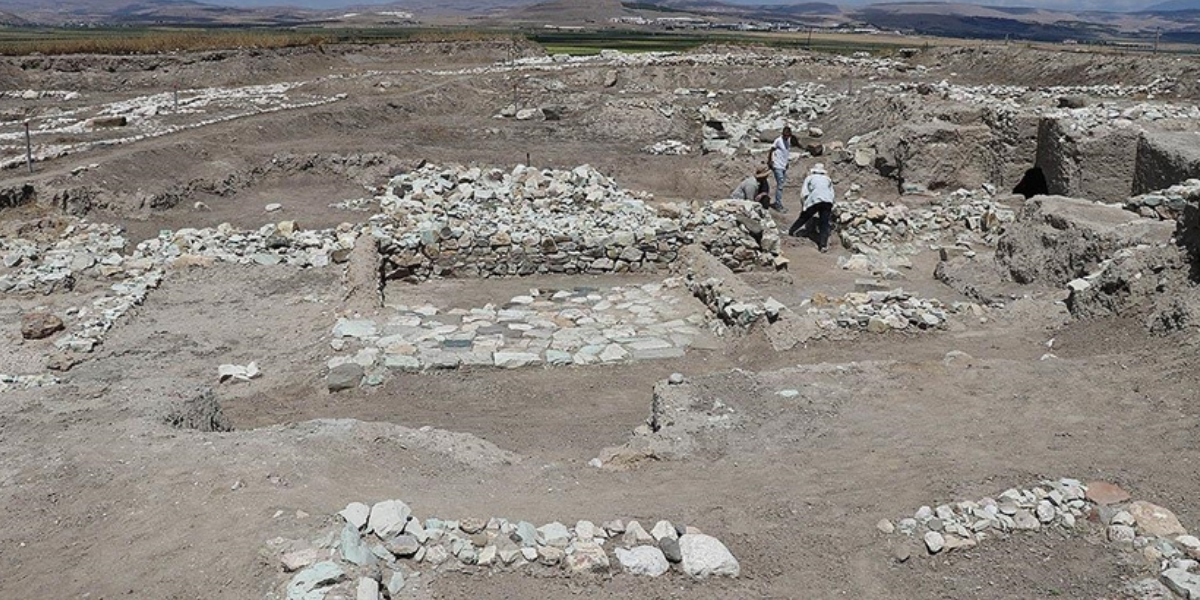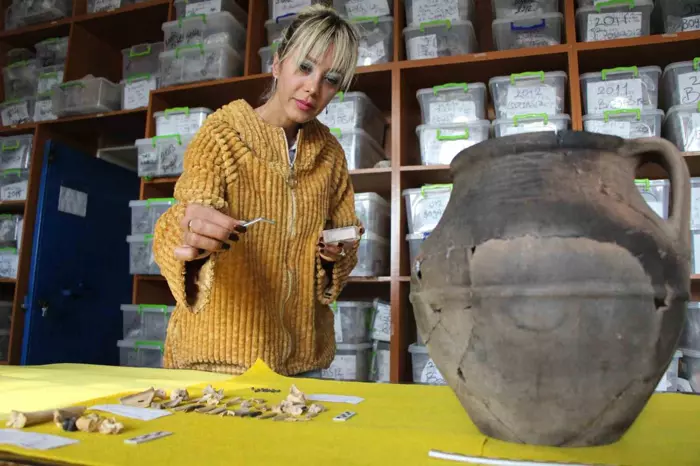
Lost Temple Unearthed in Amasya: Built from Volcanic Rock, Absent from Ancient Records
Archaeologists in Türkiye have uncovered a mysterious 2,600-year-old temple at Oluz Höyük in Amasya—one that is absent even from the writings of ancient historians such as Herodotus and Strabo. The discovery sheds new light on Central Anatolia’s religious landscape during the Iron Age. Excavations, led for 19 years by Prof. Dr. Şevket Dönmez of Istanbul

Archaeologists discovered a 2,600-year-old sacred chamber and a stone symbolizing the goddess Kubaba at Oluz Mound
Excavations at Oluz Mound, located in the Toklucak village of Amasya in northeastern Türkiye, have uncovered a sacred chamber and stone dating back to the Phrygian period, approximately 2,600 years ago. Prof. Şevket Dönmez, a faculty member of the Department of Archaeology at Istanbul University, stated that the discovery is a first in Anatolian archaeology.

Excavations continue in Oluz Höyük, where life ended with the Battle of Zela, where Julius Caesar uttered the words “Veni Vidi Vici”
Excavations continue in Oluz Höyük, where life ended with the Battle of Zela, where the famous Roman dictator Julius Caesar uttered the words “Veni Vidi Vici” Oluz Höyük is located in the Göynücek district of Amasya, in the northeastern Anatolia region of Türkiye. The mound covers an area of approximately 45 acres. More than 2

2500-year-old Persian food was found in Oluz Mound excavations
At Oluz Höyük (Oluz Mound), with settlement layers dating back to around 4500 BC, 2,500-year-old food remnants were discovered in the palace kitchen from the Persian period. Bone fragments and cereal grains found inside a clay pot closely resemble a dish known as “keşkek” today. Prof. Dr. Şevket Dönmez, the head of the excavation and

The largest Iron Age painted pottery collection of Anatolia was unearthed at Oluz Mound
In Oluz Mound where evidence of the belief in Zoroastrianism, the earliest example of monotheistic belief in the Ancient Near East, has been found, the largest collection of Iron Age painted and decorated pottery in Anatolia has been reached. Oluz Mound was discovered by Prof. Dr. Şevket Dönmez from Istanbul University between 1997 and 1999.
